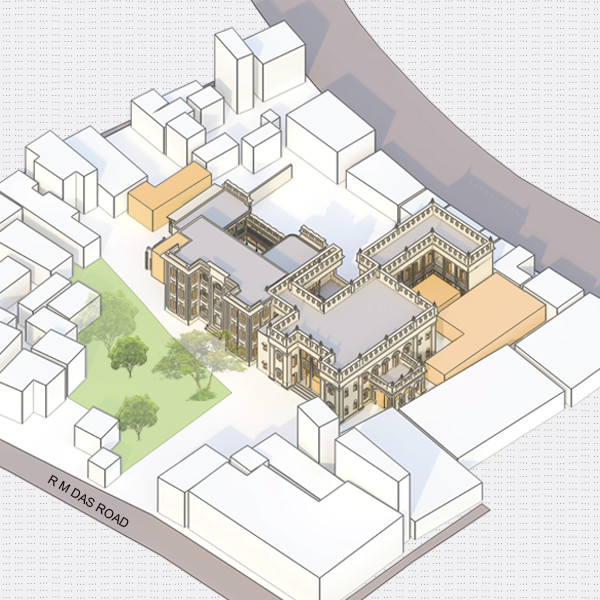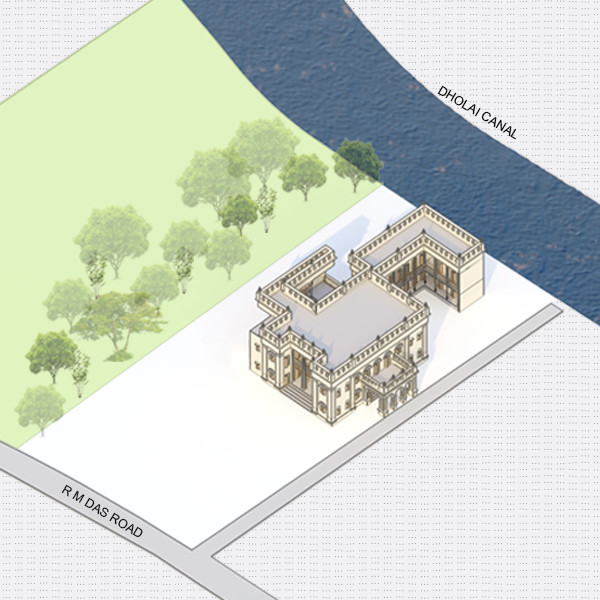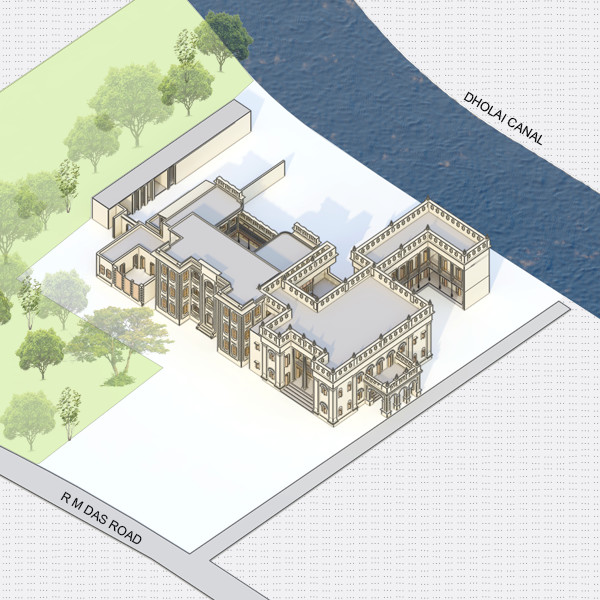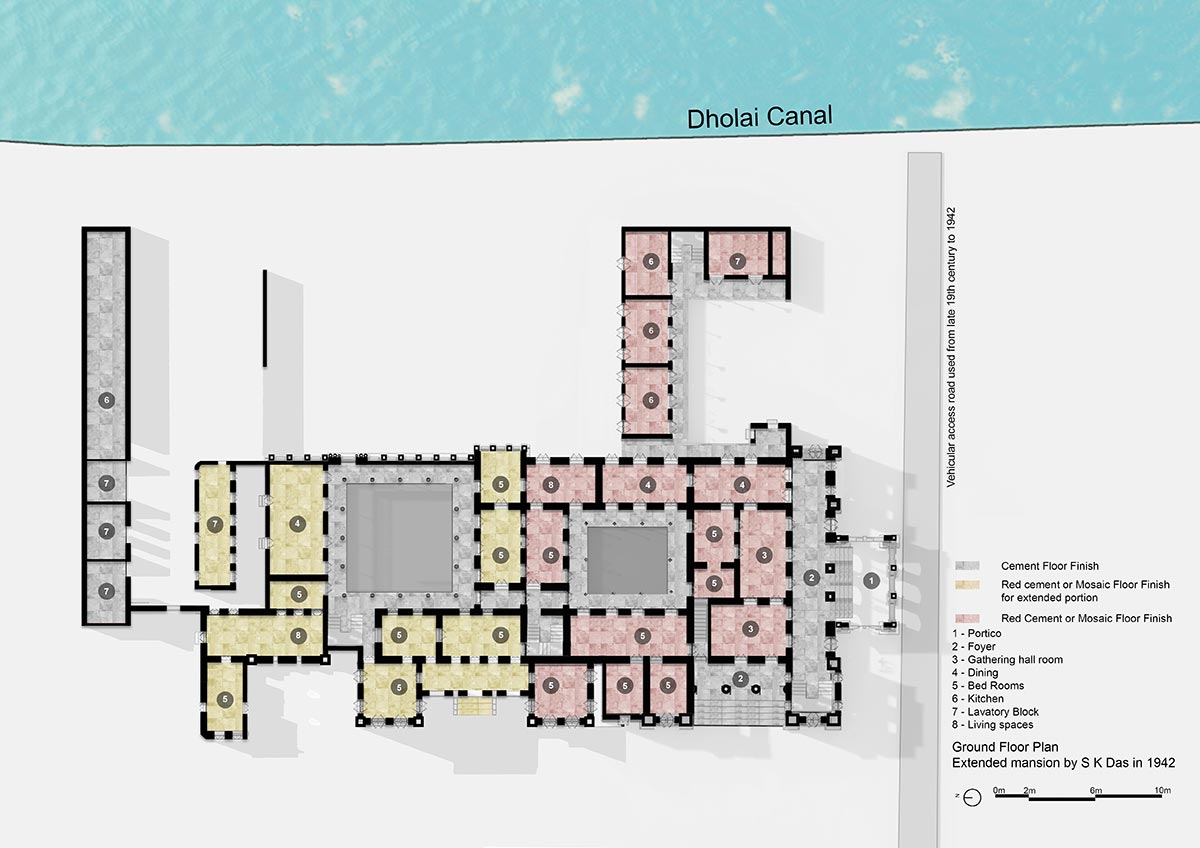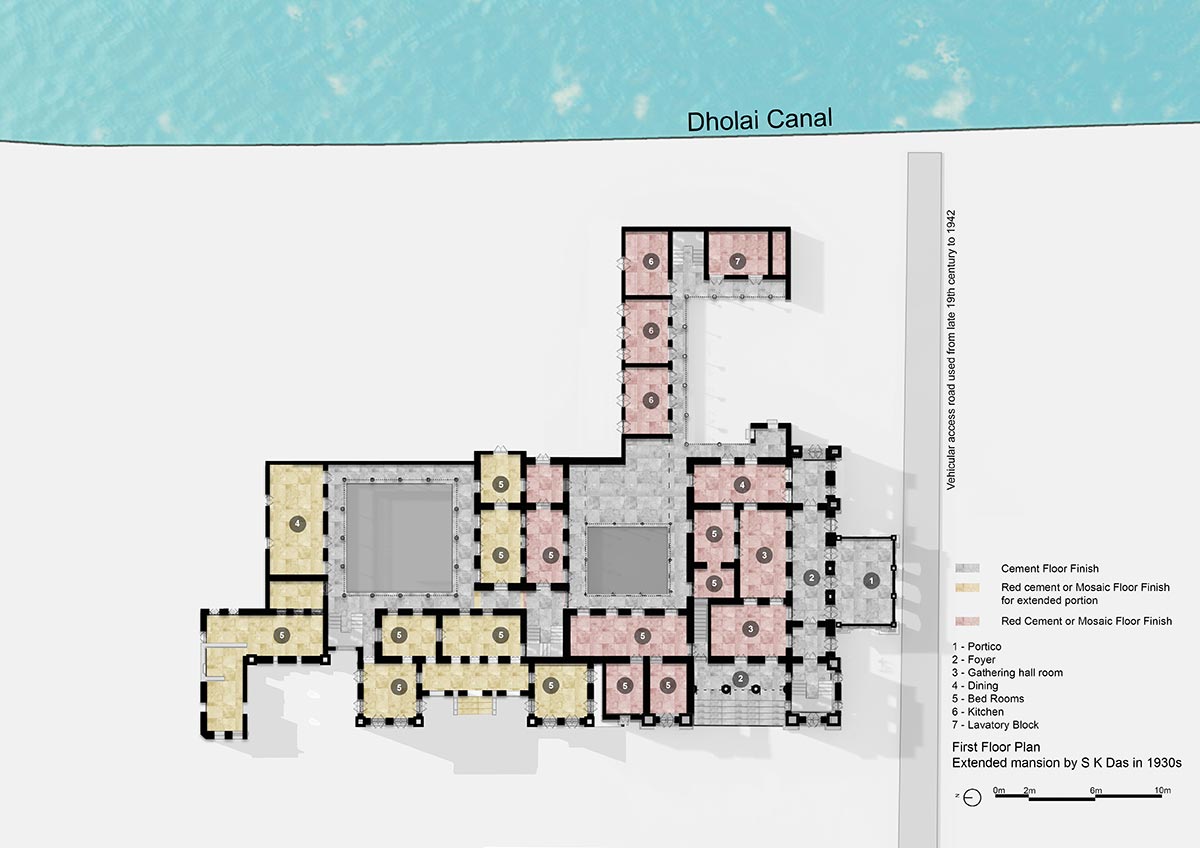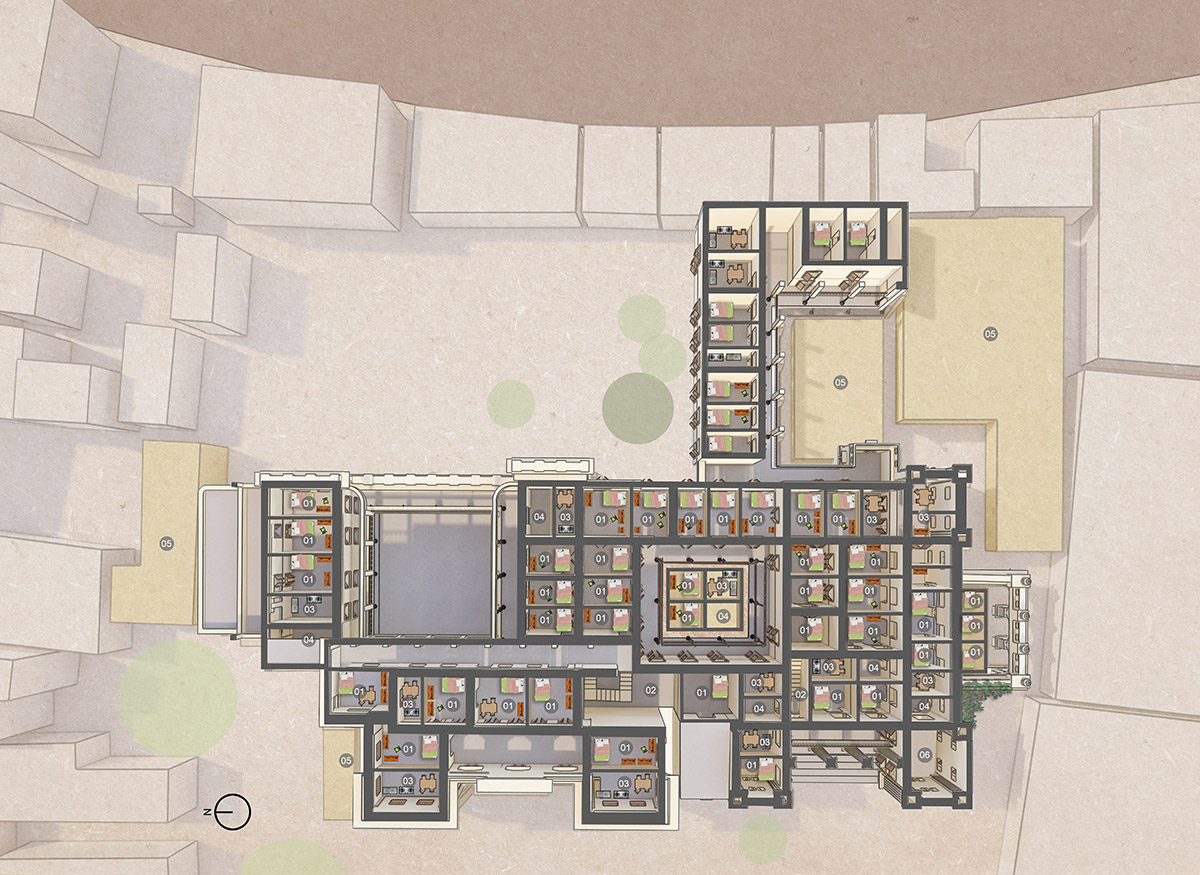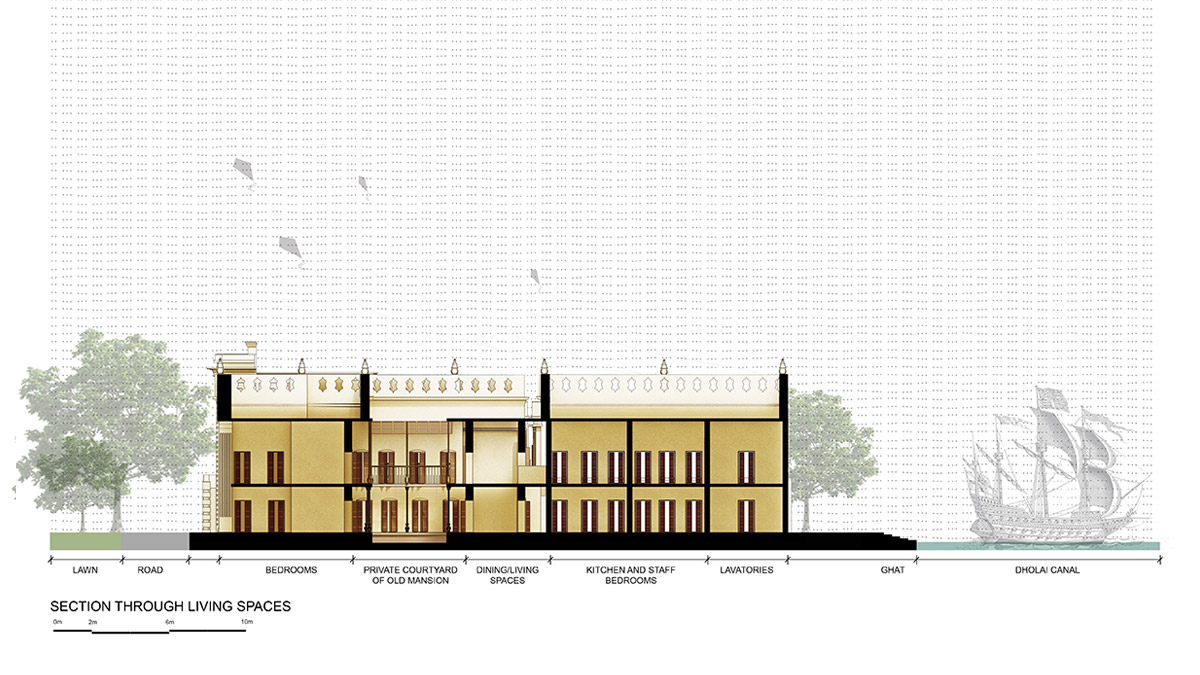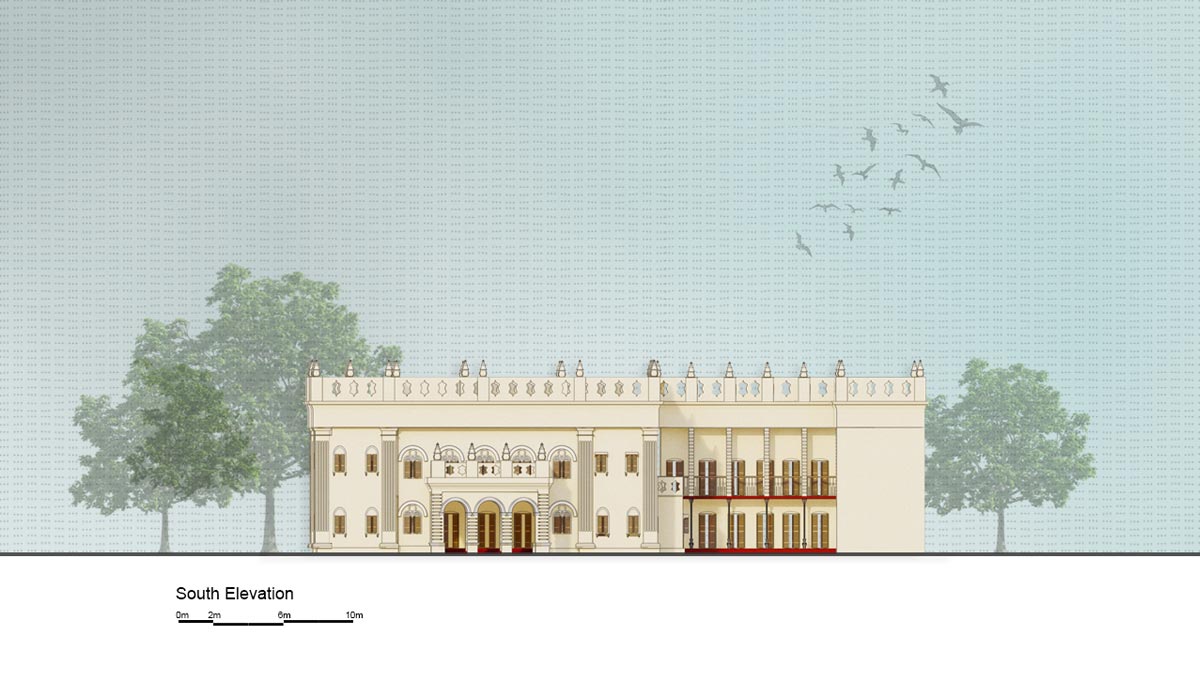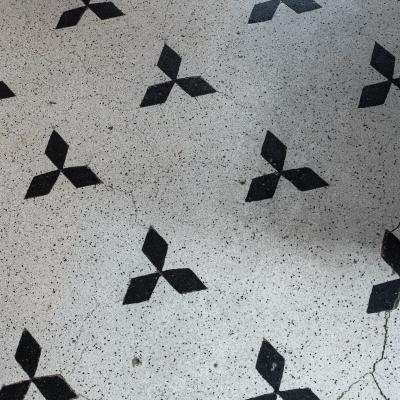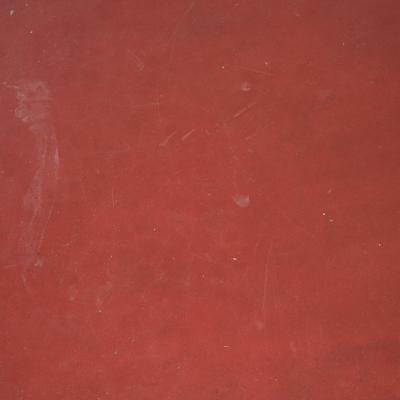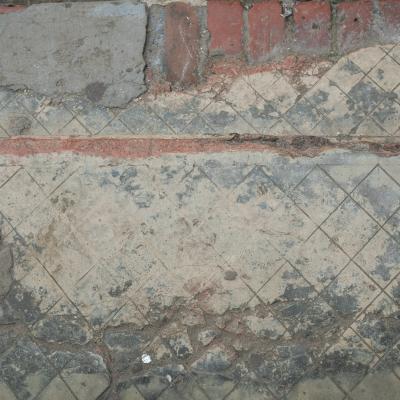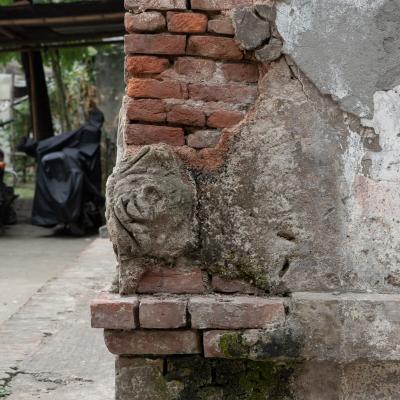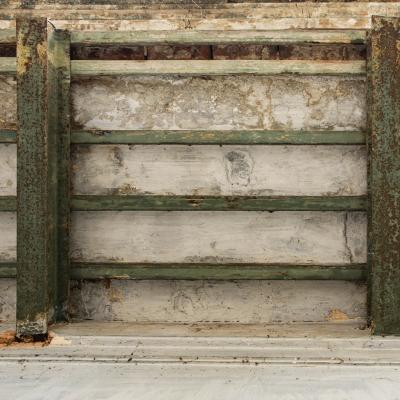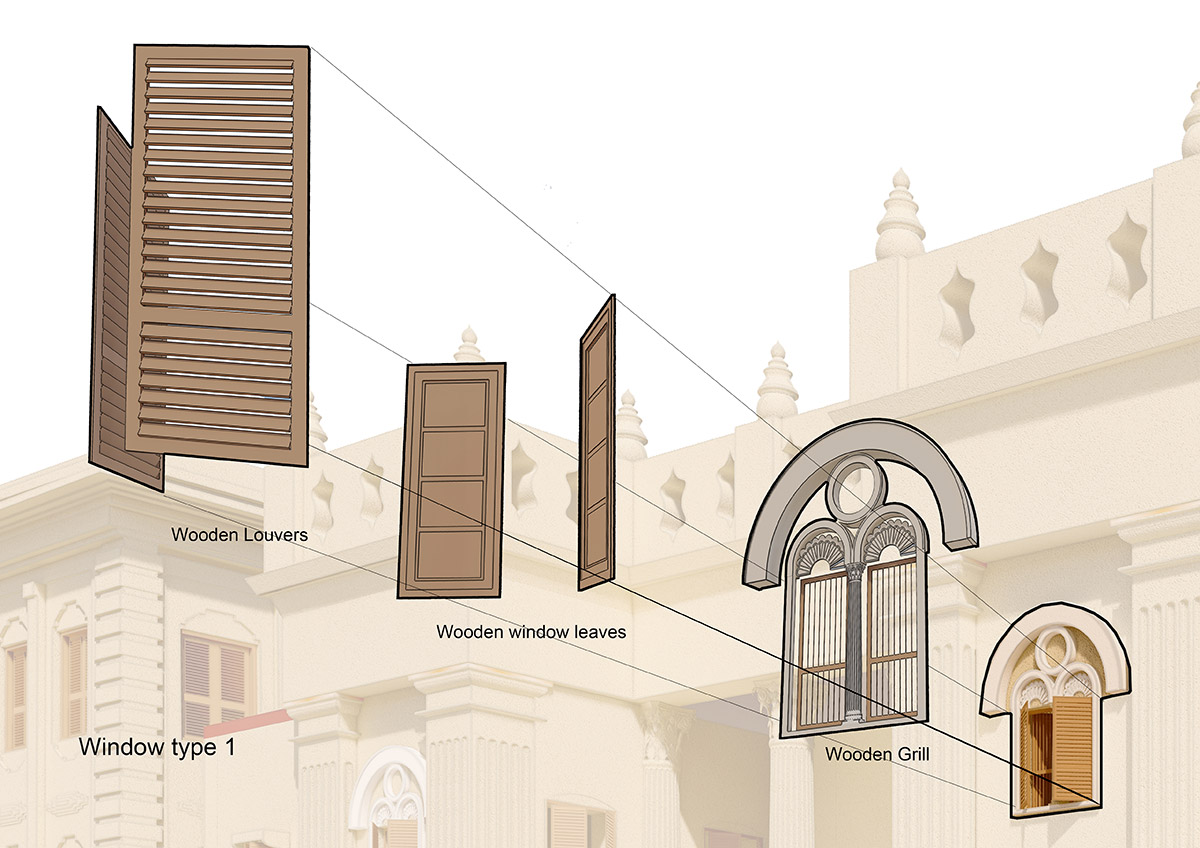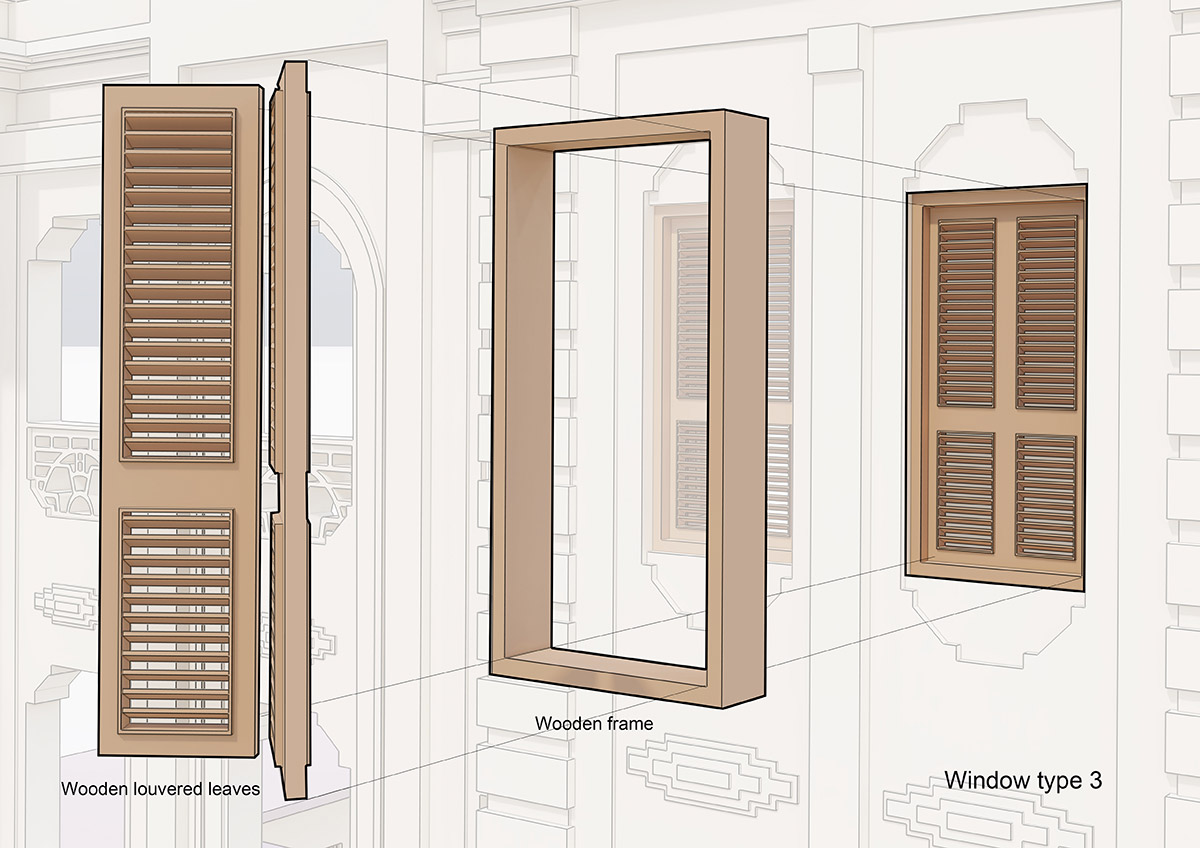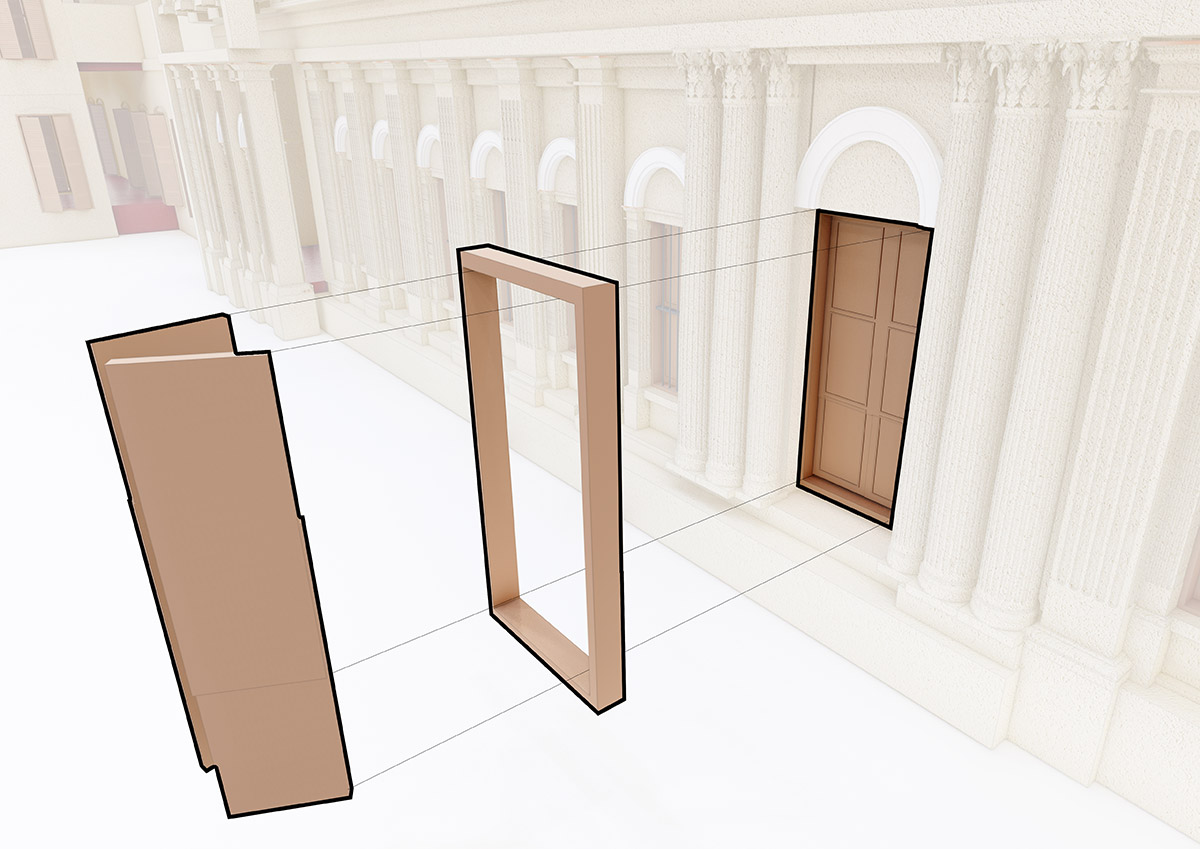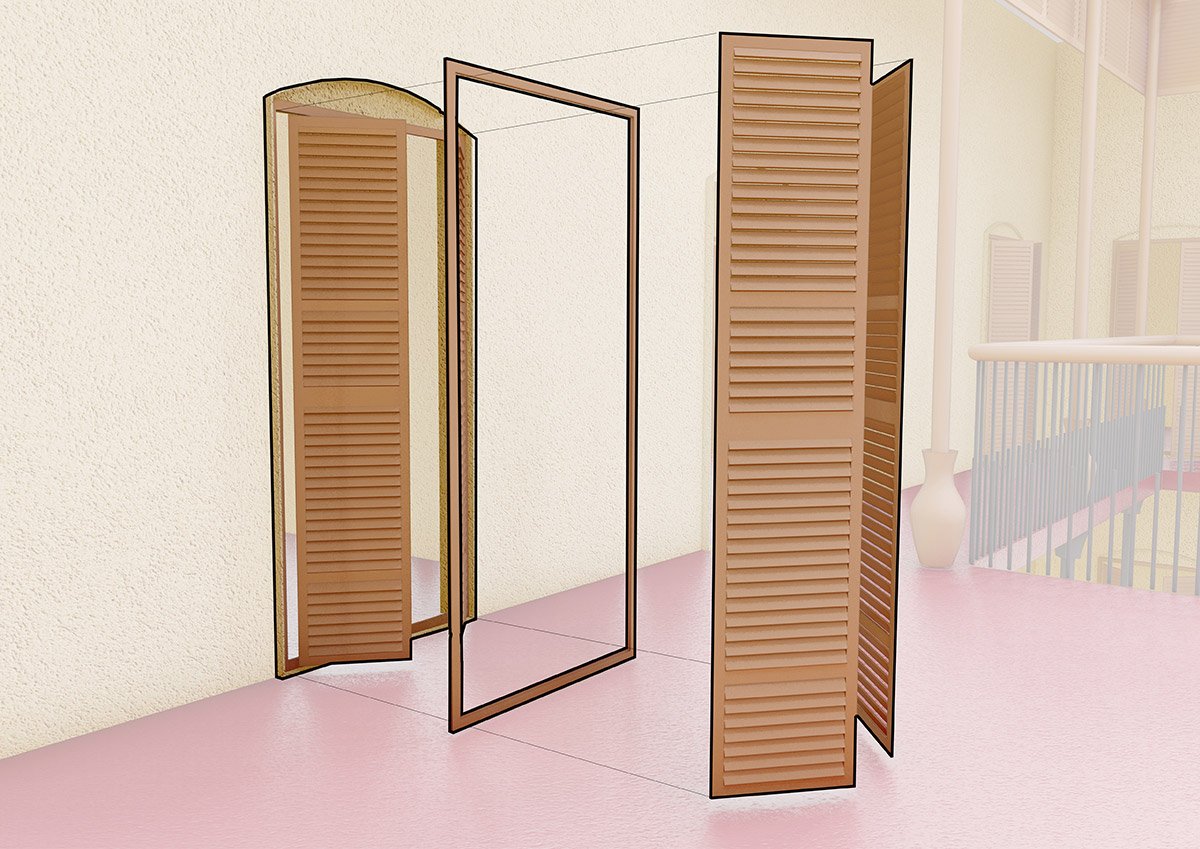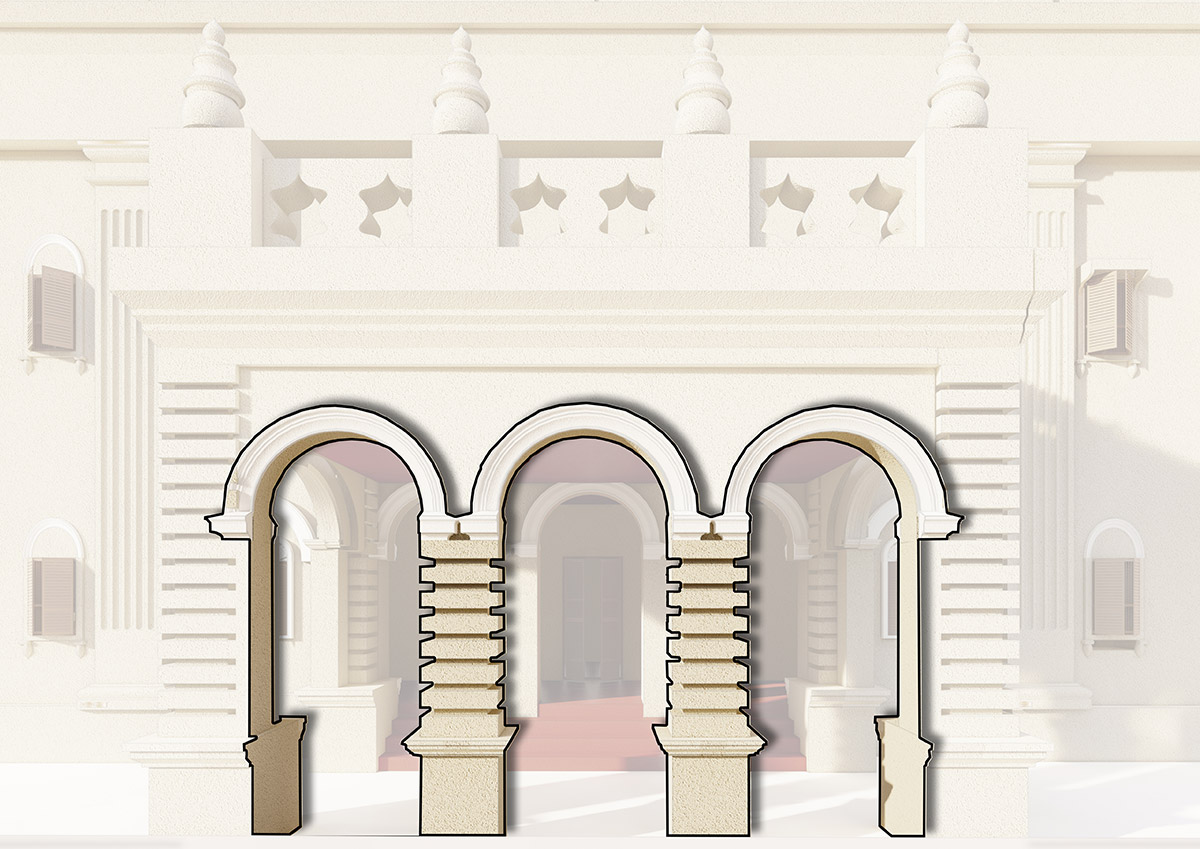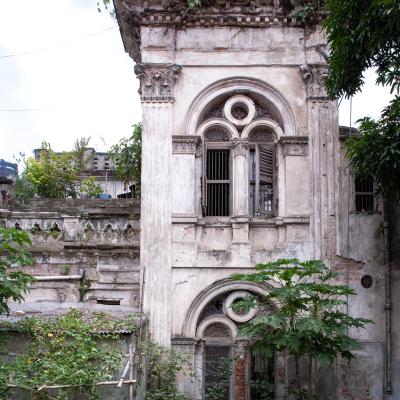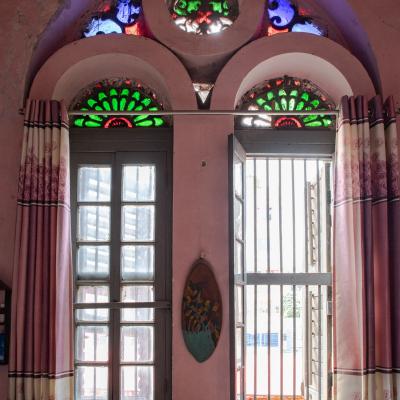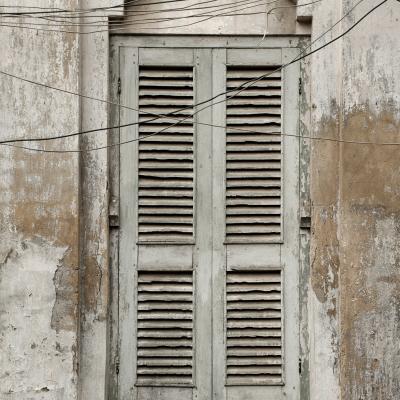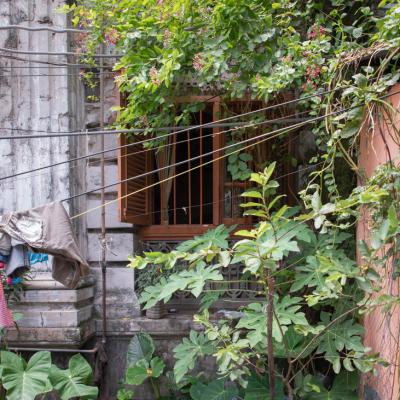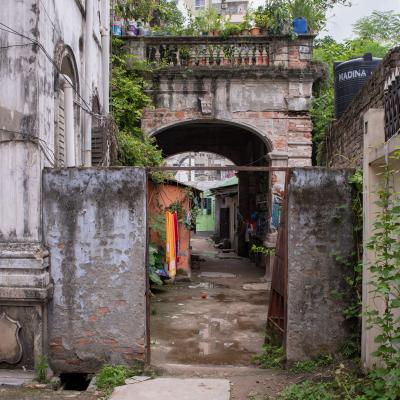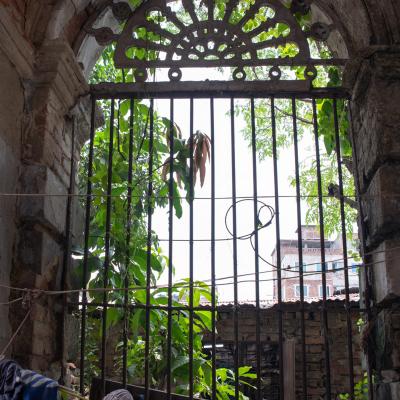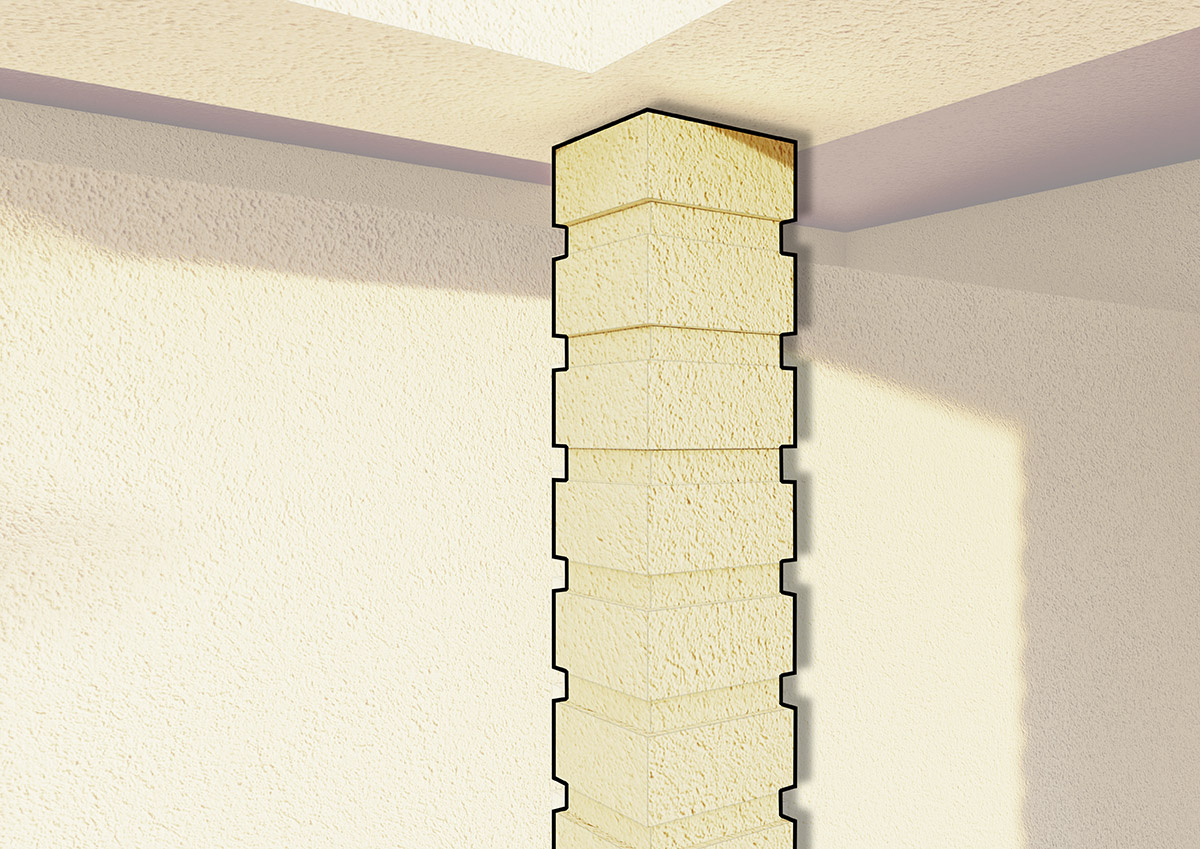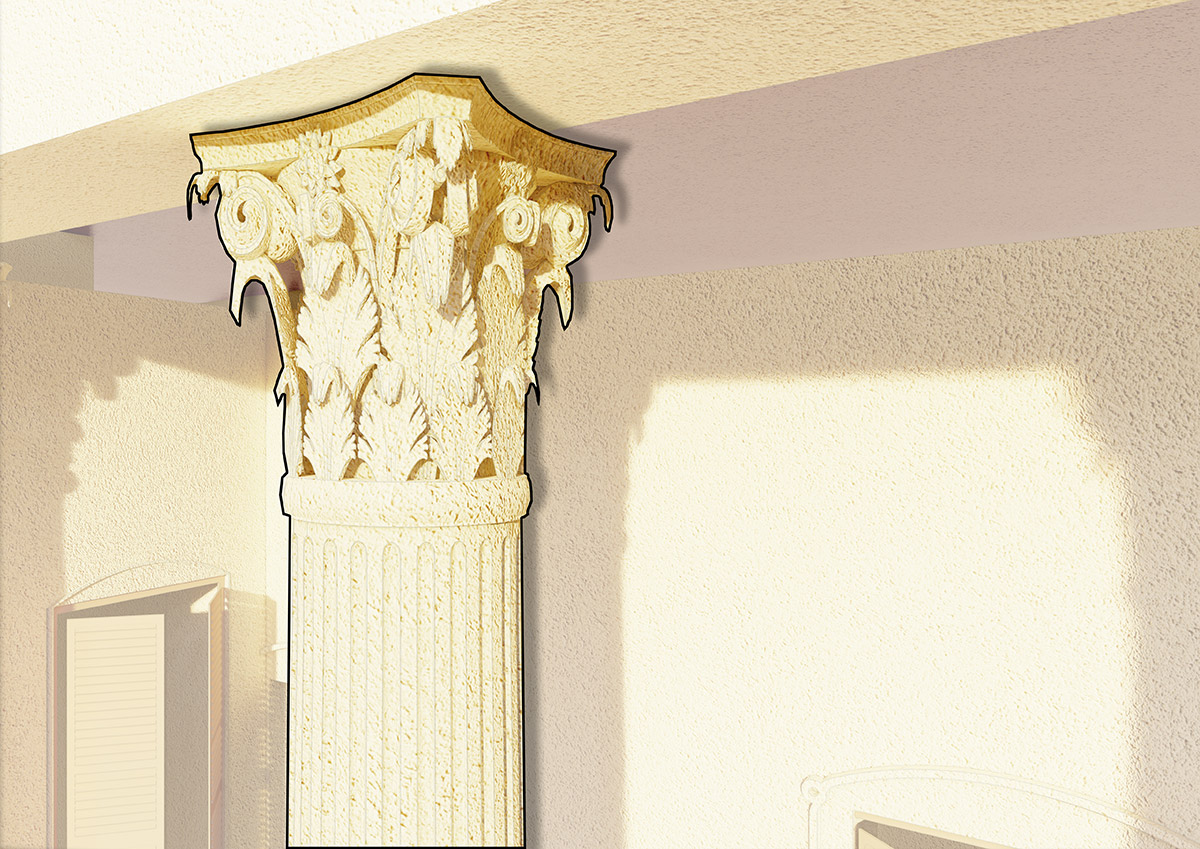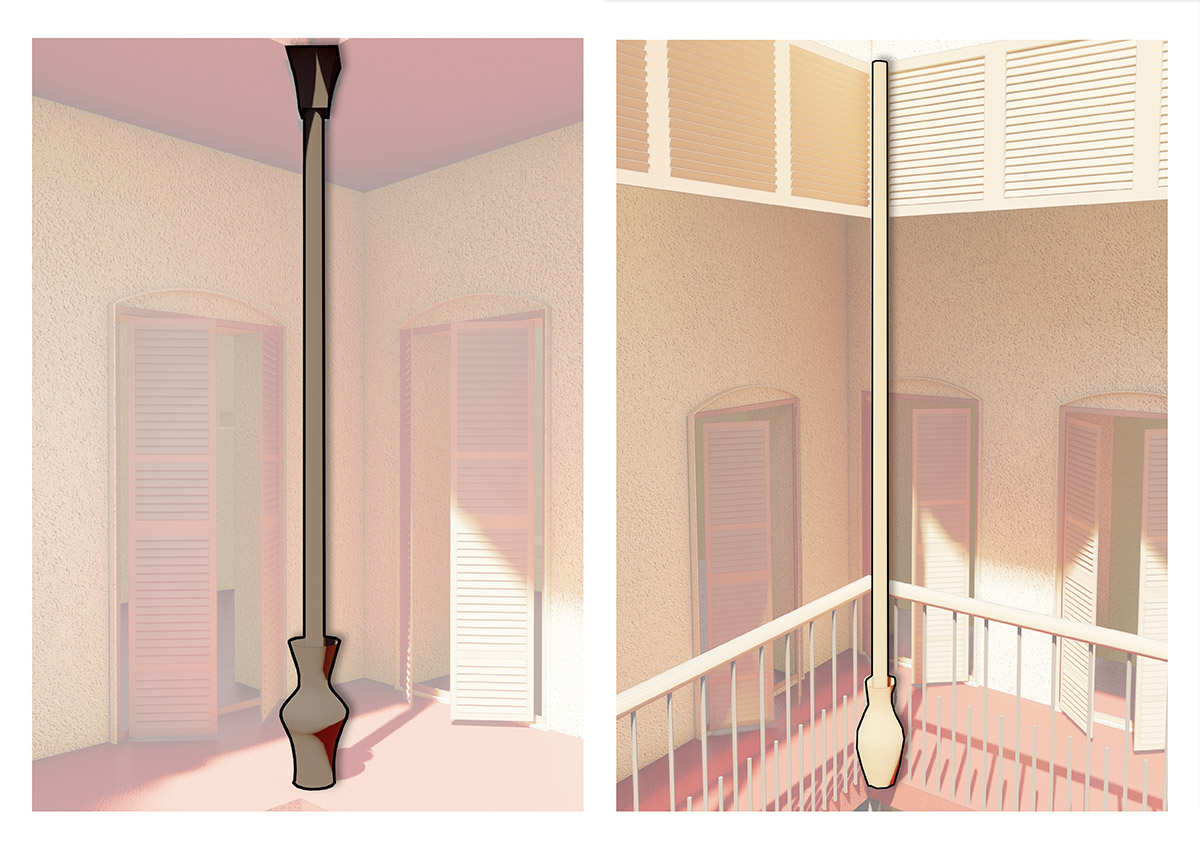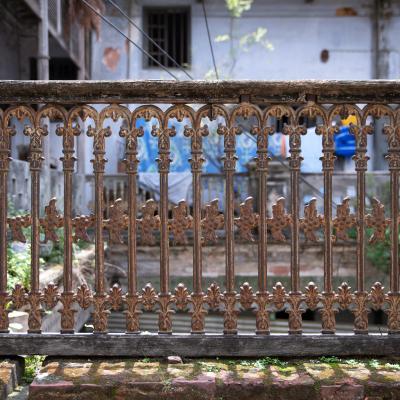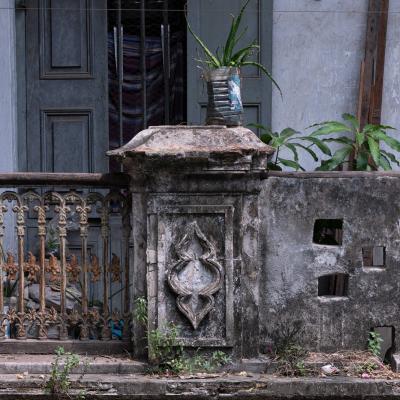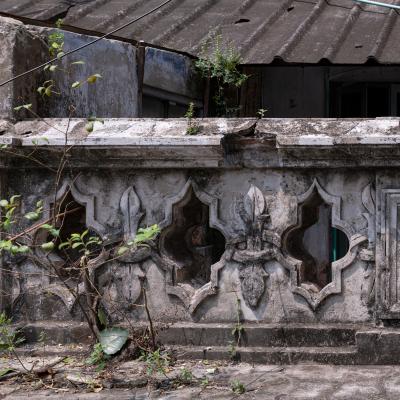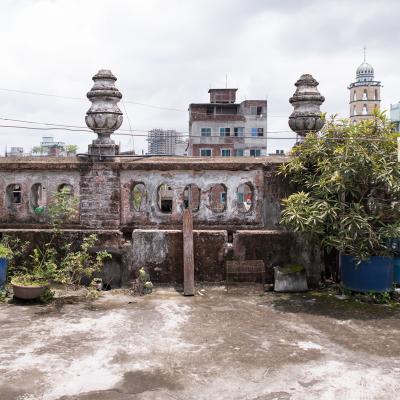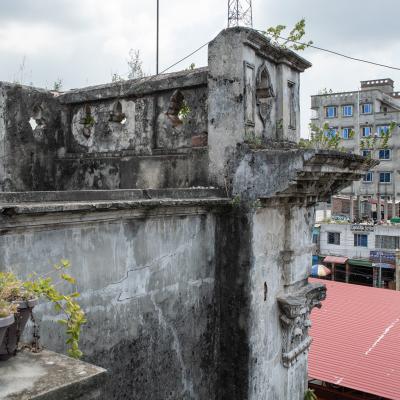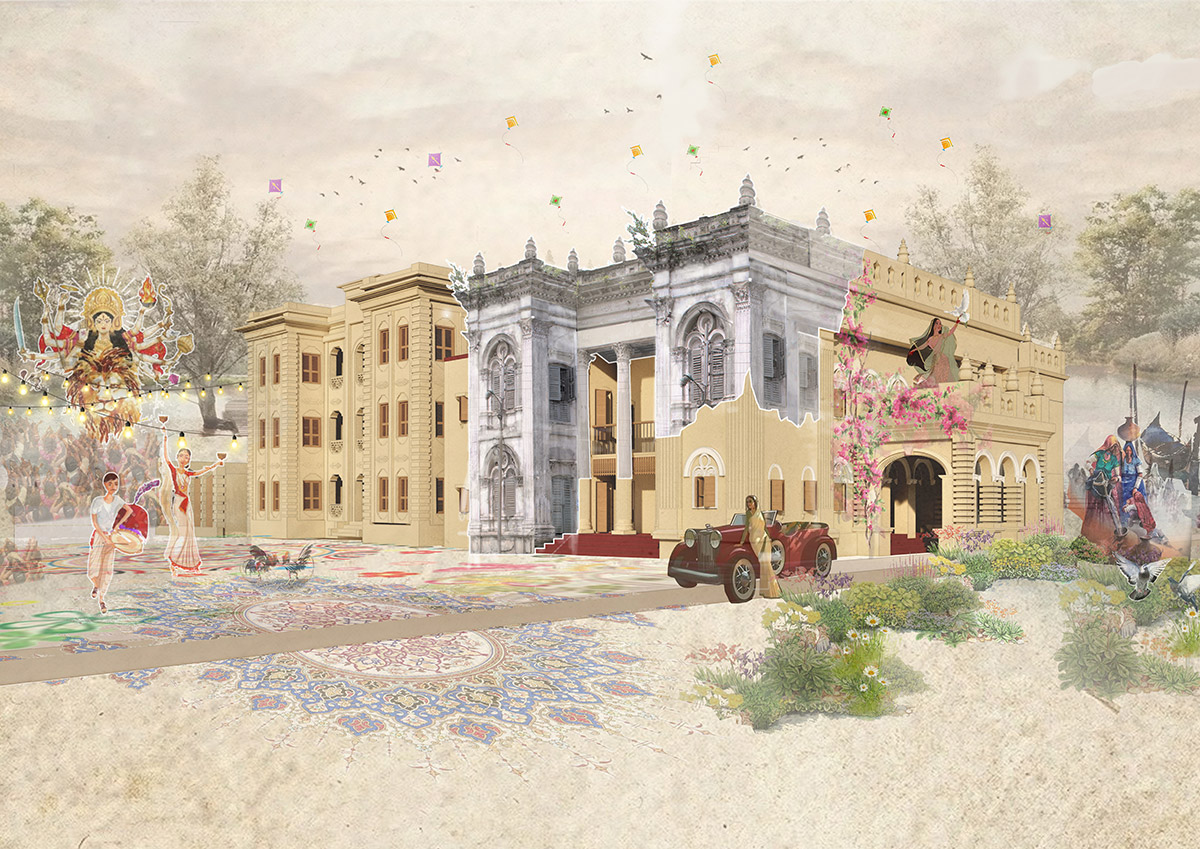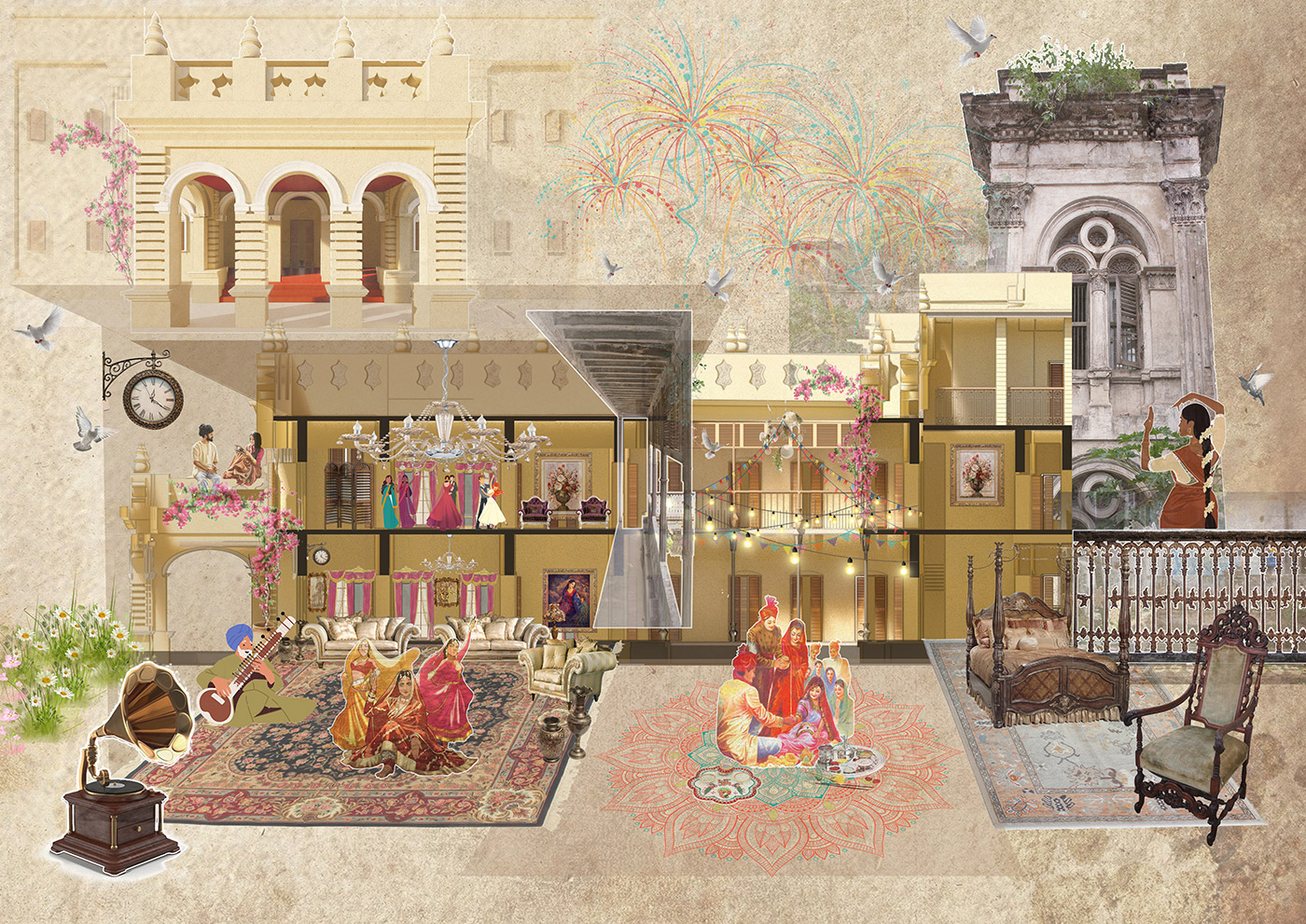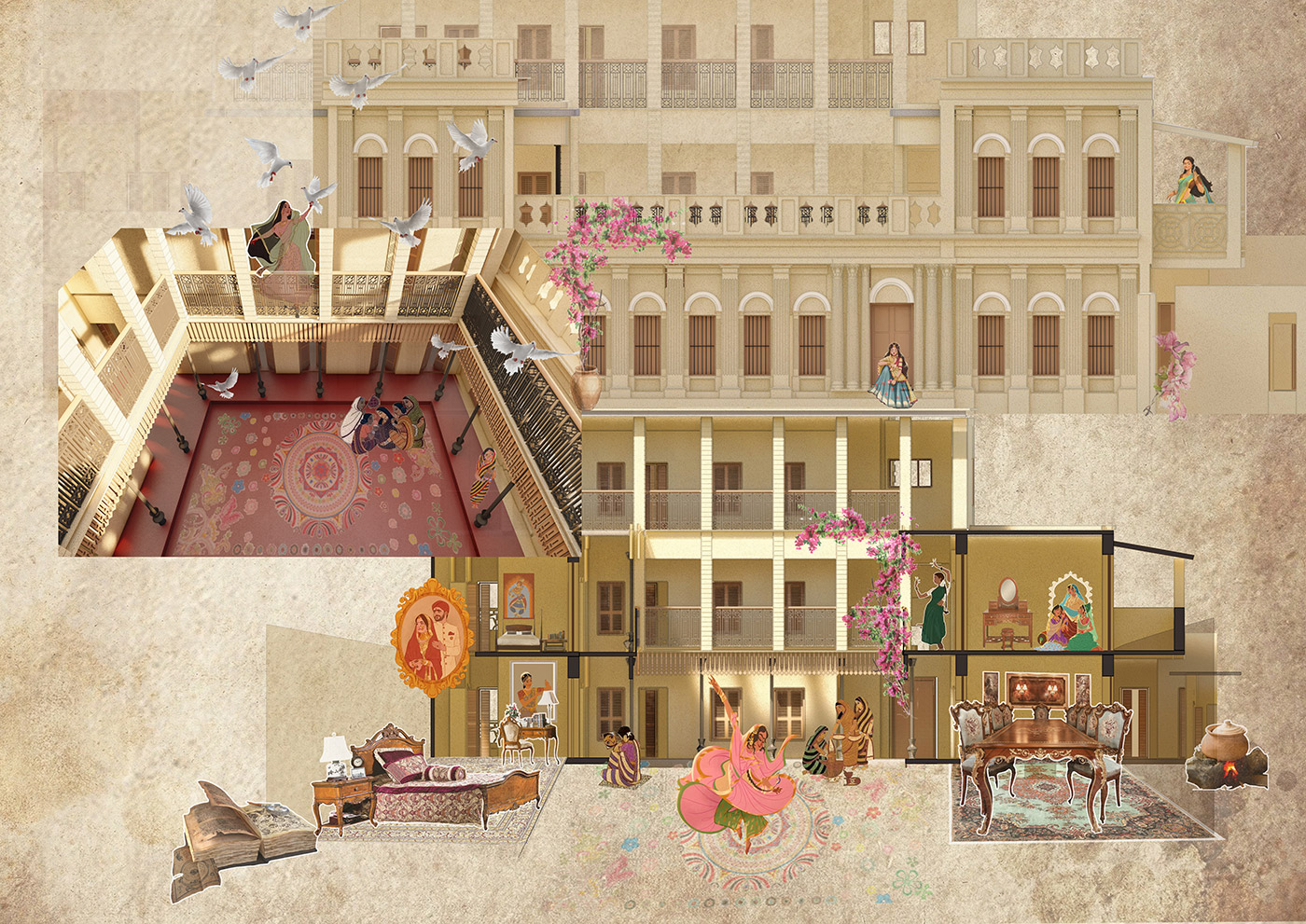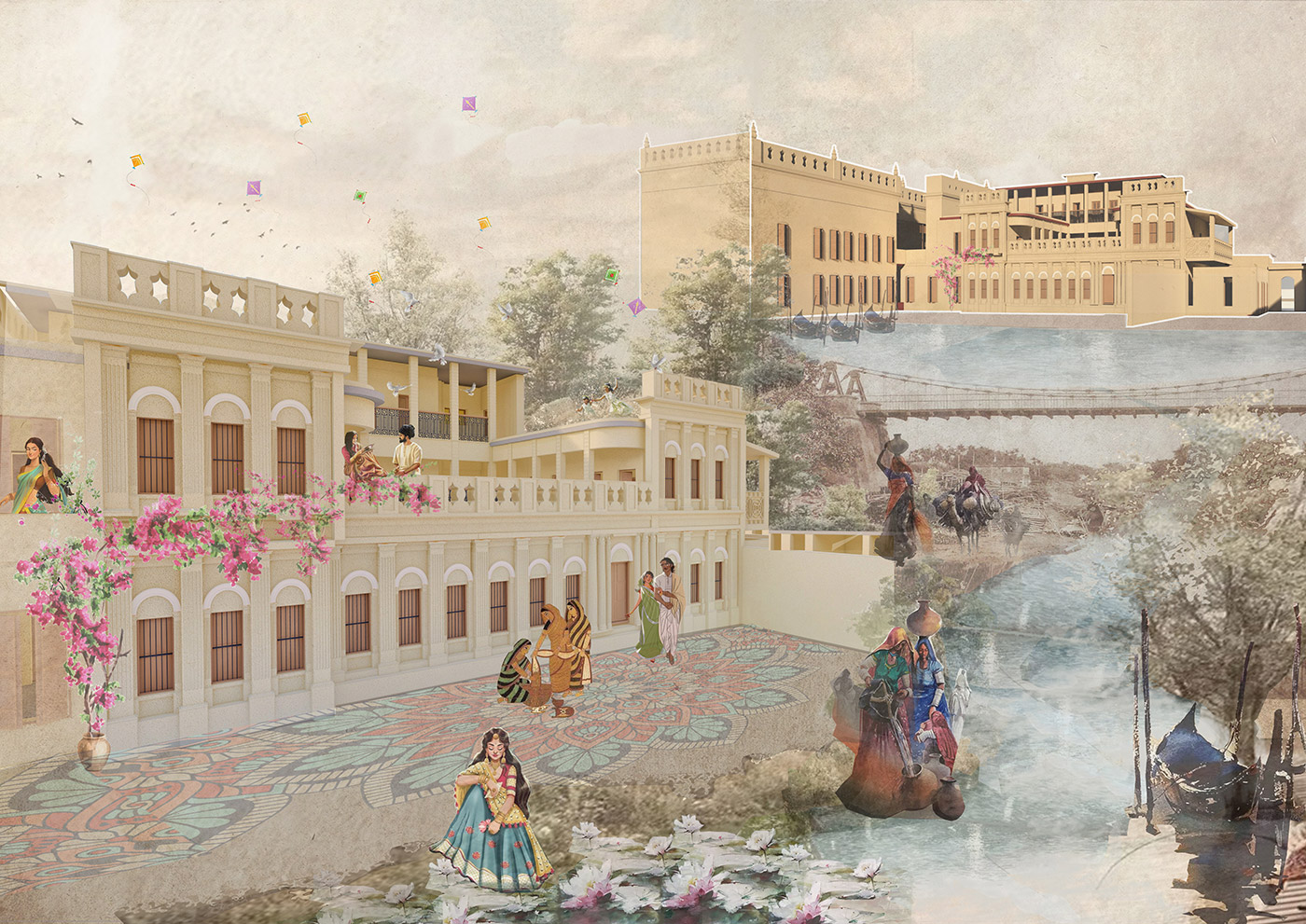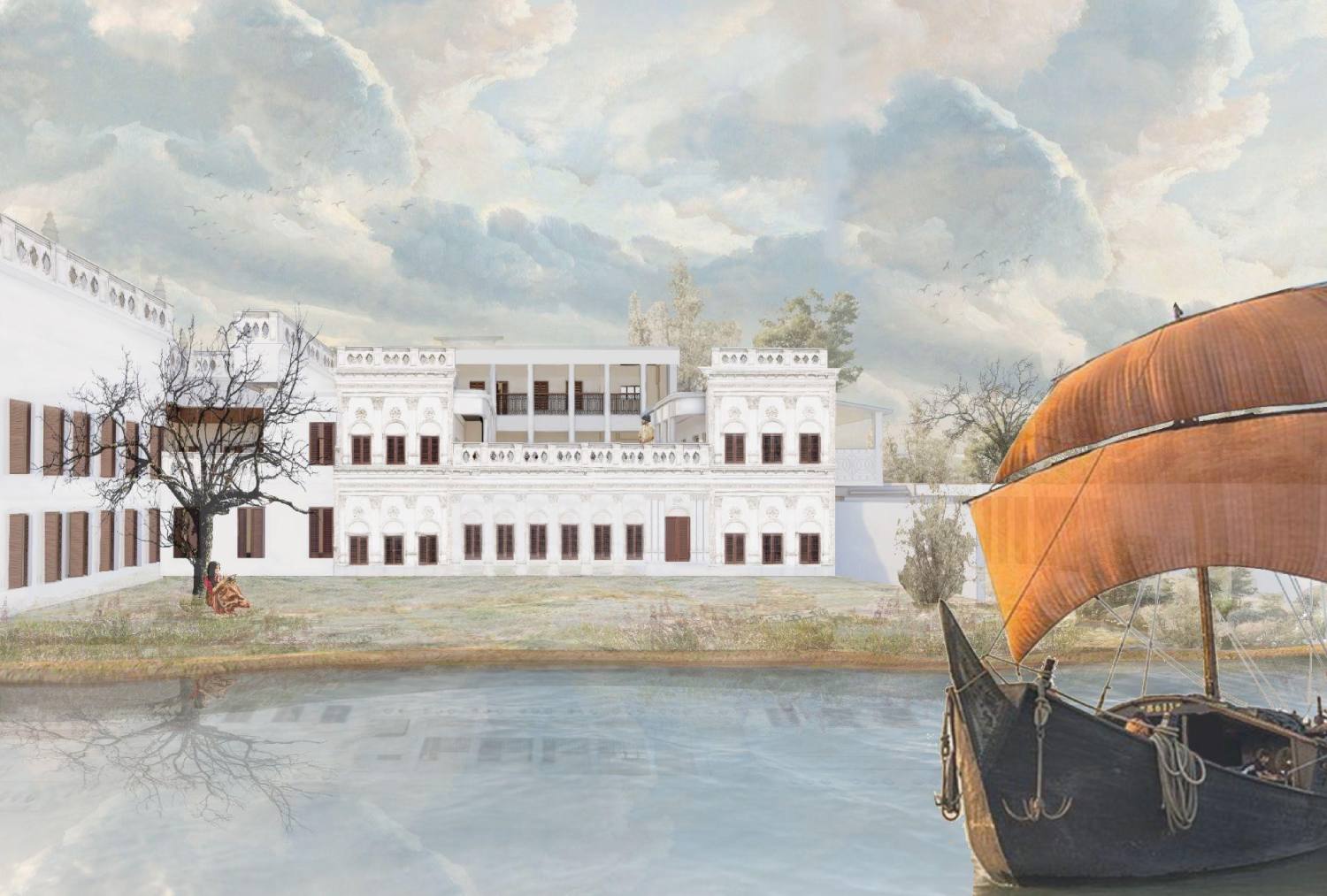Revati Mohan Das House
Architecture
This page contains architectural drawings of the house in its surrounding context, the floor plans, use of spaces, section, elevation and other details. Also, there are some abstract visual representations of the stories of special features through collage drawing.
Present surroundings
The premises of Revati Mohan Lodge, which is also often called the "Sutrapur Zamindar House", is now engulfed by a sprawling squatter community.
The private courtyards, which were once used by the women of the Das family, are now modified with metal roofs by the new community and families of firefighters.
The neighboring plots contain mixed use residential structures, where the ground floors function as shops.
Parts of the extended mansion on the north have been demolished, and are now used by the fire service department as a space for their offices.
How the site is in 2022
Transformation of the surrounding
Zamindar Revati Mohan Das had built his mansion adjacent to the Dholai Canal in the late 19th century, when the site was surrounded by lots of trees. In 1942, Satyendra Kumar Das, son of Revati Mohan Das, extended the mansion on the north of the site.
The Dholai Canal had been transformed into a box culvert between 2004-2005. Within the hundred year time span, the locality grew very densely and organically.
Load bearing walls were used to divide the spacious rooms. Private courtyards were interconnected with corridors, alongside which the bedrooms were built. The hall rooms were arranged as the next layer of semi private functions. The visitors would enter the mansion through the public entrance foyers on the southern and western sides. The dining spaces were closer to the kitchens. Service areas like the kitchens, lavatories and staff quarters of the old mansion were situated on the southeastern end of the site. This part functioned as a service entry, and was once accessed through the Dholai Canal. Kitchens and lavatories of the extended mansion were situated on the northern part of the site.
01.Portico, 02. Foyer 03. Gathering hall room 04. Dining, 05. Bed rooms, 06. Kitchen, 07. Lavatory Block 08. Living spaces
Use of spaces
The main vehicular entry to the site was from the west through the portico, which is located at the southern side of the mansion. Adjacent to the portico is the foyer, which led important guests to the spacious hall rooms and ballrooms. Parties, music and dance events, important business and religious meetings were all held in these halls. The central private courtyards were mostly utilized by the women of the family, and were accessible through the enormous bedrooms. The lawn on the west of the site, was used to organize many religious festivals, weddings, pujas, panchayat meetings etc.
Use of spaces 1942
Legend: 01. Gathering Hall, 02. Dining 03. Living rooms (study/ library) 04. Beds, 05. Lavatories, 06. Kitchen, 07. Stairs, 08. Foyer, 09. Private courtyard 10. Portico
Use of spaces 2022
Legend: 01. Bed rooms 02. Stairs 03. Shared dining and kitchen facilities 04. Shared toilets 05.Squatters 06. Electrical rooms
Views through the building
Exterior views of the house
The south elevation of the house was built with characteristics of Neoclassical architecture, which were heavily adapted in colonial Zamindar houses of the late 19th century.
View from the South
The west facade of the mansion portrays the contrast of the influence of architectural style of the British colonial period, which was adapted during construction of the extended portion.

View from the West
Details of the house
Materials
This mansion carries exemplary workmanship in each of its detailing. Dwelling rooms are lined with decorative mosaic tiling. Corridors and circulation lobbies have cement plastered floors. Cast iron was used for structural elements.
Windows and openings
Windows of the mansion are double layered French louvered windows. The outermost layer is a louvered leaf, the middle layer is a wooden grill and the innermost layer is a solid wooden leaf. They are decorated by varying types of arches as lintels.
Window type 1 is a trochoidal window which has a venetian arch.
Window type 2 has decorative lintels which are extruded for protection from rain and sunlight.
Window type 3 is a full height wooden casement window.
Special features
There are some antique features in the house which reflect the unique characteristics of construction and lifestyle of the early times.
Artistic representation
Similar to the grandeur of zamindar mansions of the era, Revati Mohan Lodge had an architectural elegance of its own. It was a focal point of life in the Sutrapur area.
The mansion had large hall rooms, open spaces, multilayered halls and courts that played a major role in organizing festivals, social events such as weddings, New Years Eve celebrations, meetings, etc. Ball dances used to take place in the hall rooms and they were quite popular among the new elites. Religious meetings to discuss Brahminisim would also be held at these halls.
Specific courtyards were segregated for the females where they could carry out their daily livelihoods and spend leisure time.
Usable rooms and terraces mostly faced the eastern side of the Dholaikhal creek making the mansion more pleasant for its users as they could enjoy the South-eastern wind along with the awestucking view of the waterbody.
The magnificent Revati Bhaban sat right along the banks of the Dholai canal with the canal itself being directly connected to the Buriganga River. Portions of the house complex would open up towards the canal with ghats, steps and platform. Merchandises like brick, wood, powdered brick, supplies for steam press would be transported from the farthest ends of the country, and even as far as Kolkata and then Burma using the Dholai canal. Freighter boats owned by Revati Mohan Das used to be anchored at the confluence of the Buriganga river and Dholai canal.
Exploring the house
A heritage building need not be a monument or landmark building; it can be representative of an epoch or period in the history of the city in many ways. Through this project, we have captured various perspectives in the form of virtual tours, timelines, stories, photographs, architectural features and locations.
Use the buttons belows to navigate to the details pages.

